Bishnupur- The Oldest Terracotta Temple City of West Bengal
The temples in Bisnupur withstood a ravage of time by reframing a model of descendants to a unique style of Eka-Ratna and detailed terracotta depicting epic stories from Ramayana and Mahabharata. Once, the lavish heritage was the capital of the Mallabhum kingdom established by Jaggat Malla, the ruler of the Malla dynasty.
Bishnupur: Unveiling the Timeless Splendor of West Bengal’s Oldest Terracotta Temple City
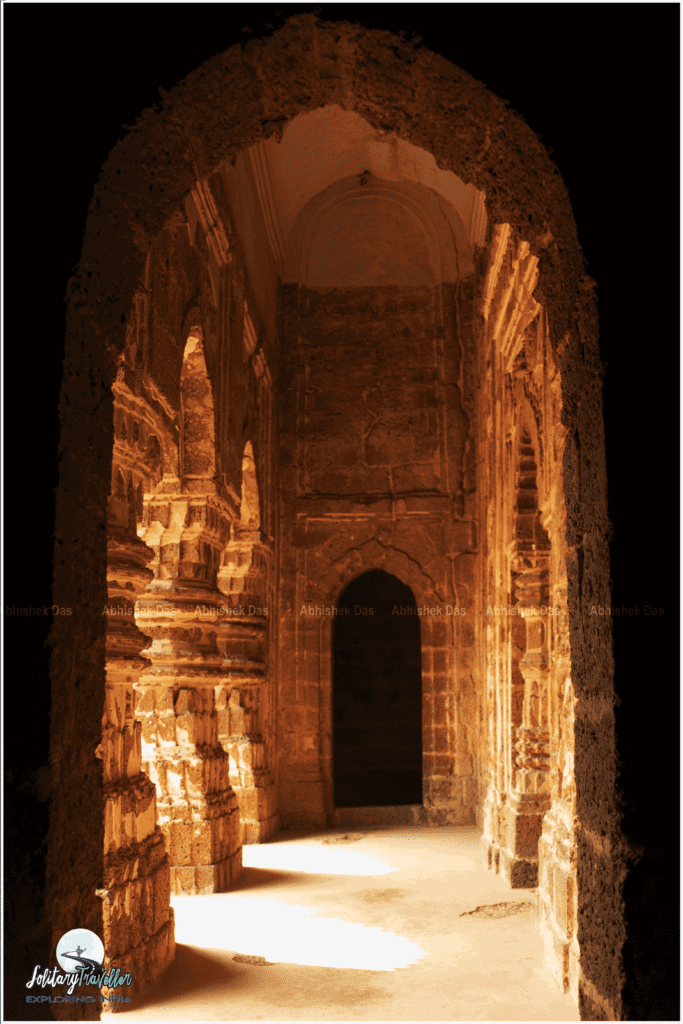
The traditional handloom ‘Baluchari’ Sarees, terracotta potteries and captivating art forms of artefacts will surely make you stunning. Let’s explore a town whispering the language of terracotta amidst innumerable architectures as a footprint of history.
History of Bishnupur
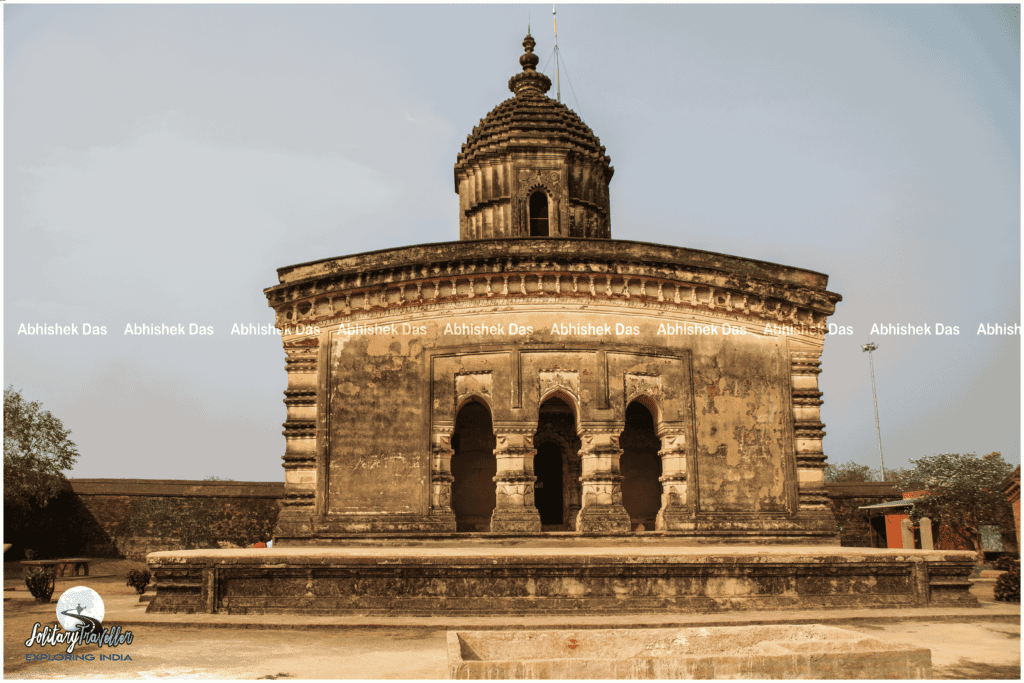
In the glorious past of the Malla Dynasty, Bishnupur was also called ‘Vishnupur’ by the Malla rulers, as they were the followers of the deity of Vaishnavite. During the 17th and 18th centuries, they developed a substitute and a new way of beautiful craft for the architecture ‘Terracotta’.
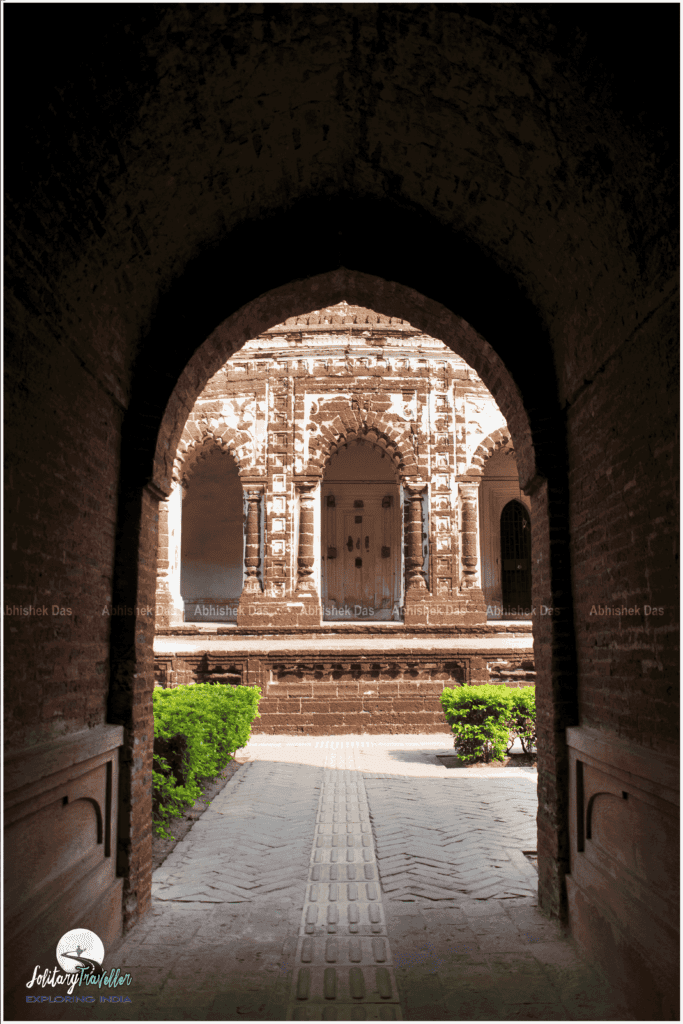
The engineering marvel of curved Bangla roof blended along the domes with multi-lobed arches displays the talent of the artists portraying crafted stories on local laterite stone and bricks, finding a special place in Bangla’s history. The noble heritage and proud culture of the style of music [Bishnupur Gharana of Hindustani Classical music] are still present.
You may also like: 10 Offbeat Tourist Places in West Bengal
Places to Visit in Bishnupur:
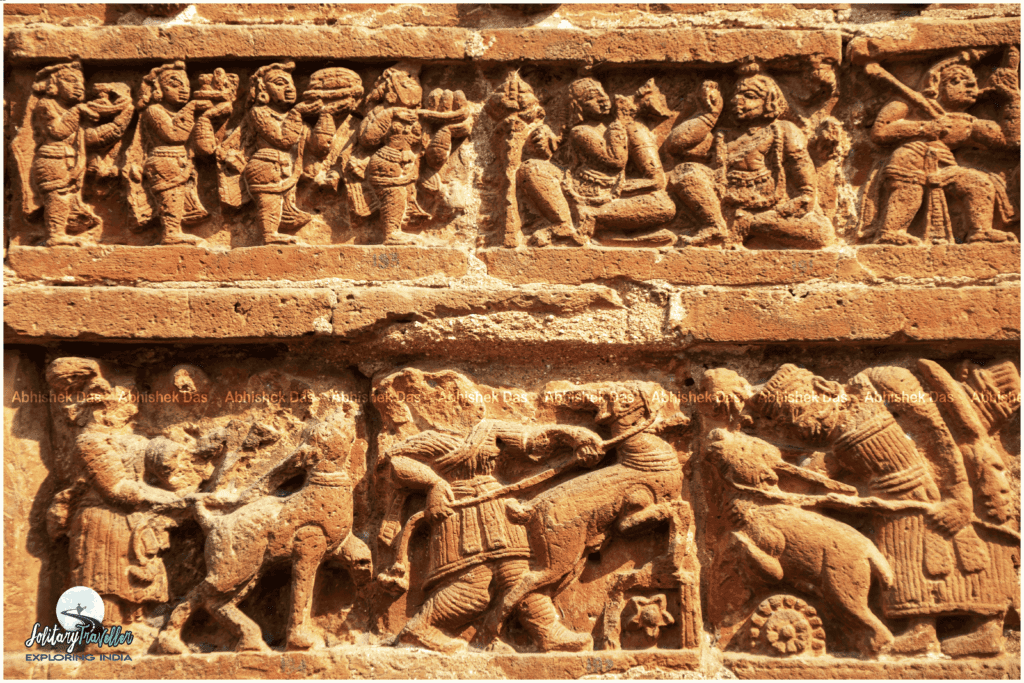
The visit to The Oldest Terracotta Temple City of West Bengal gives an immense grandeur to their identity as a conveyor. Since 1997, most of the Bishnupur temples are maintained on the list of UNESCO’s World Heritage Sites and are protected under the Archaeological Survey Of India [ASI]. The town blends with the great Utsav of The Bishnupur Fair held annually at Poush Mash in the Bengali Calendar.
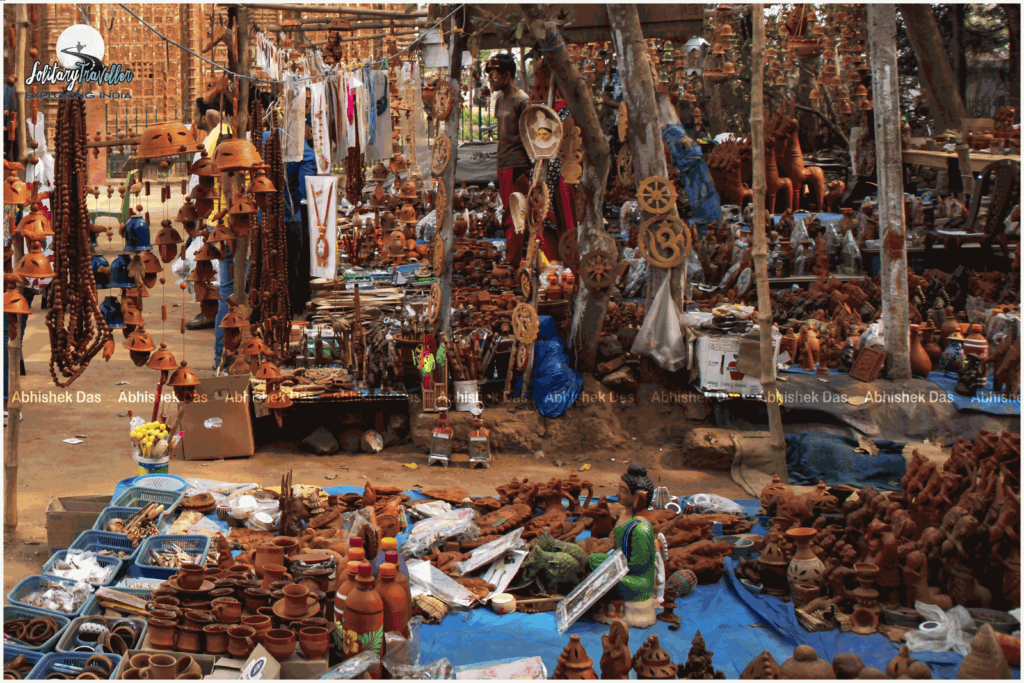
It gives a glimpse of Bengali Culture richness in traditional music and dance decors that venerates the heritage of West Bengal. Bishnupur provides a serene place to enjoy a day break in cultural heritage with a rich essence of the artefacts of terracotta.
Chinnamasta Temple
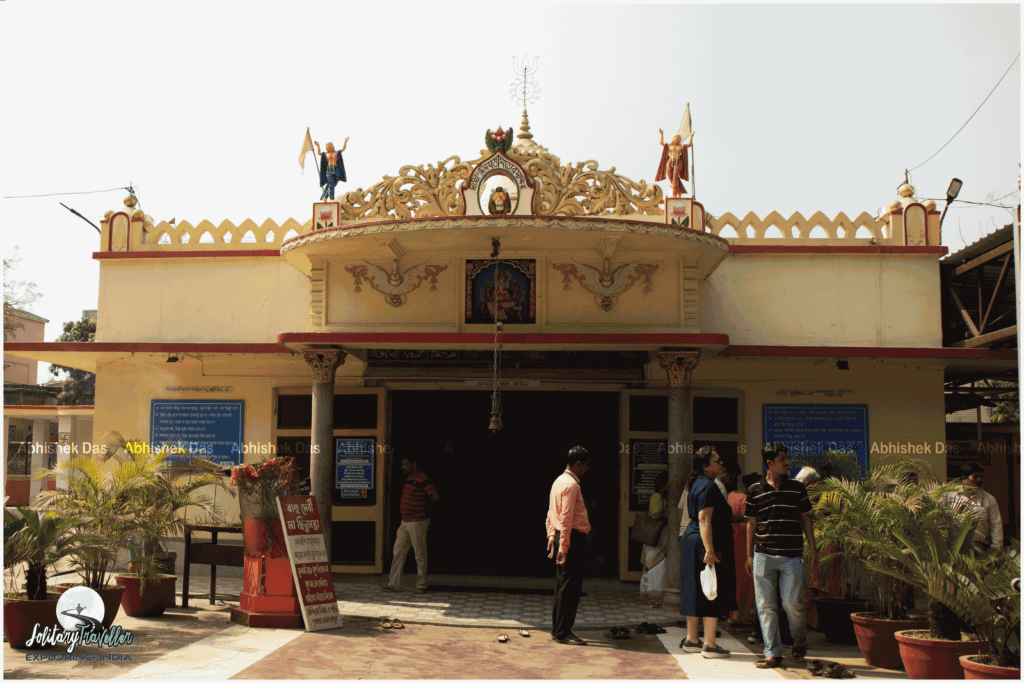
The most lively temple of Bishnupur stays crowded with regular devotees for the divine shrine of Mata Chinnamasta. The temple is almost 100 years old akin to the Goddess of Shakti depicts the most ferocious form of the Tantric Goddess. The deity has been engraved out of red desert sandstone with her separated head in the right hand and a sword in the left. The Guin family of Midnapore contributed to establishing the temple in the 19th Century with its decorated complex, which might have been renovated in recent years. The colourful shop around the street with the collection of local handcrafted artefacts will surely entice you to buy.
You may also like: Top Destinations Across India That You Can Visit This Summer
Dalmadal Cannon
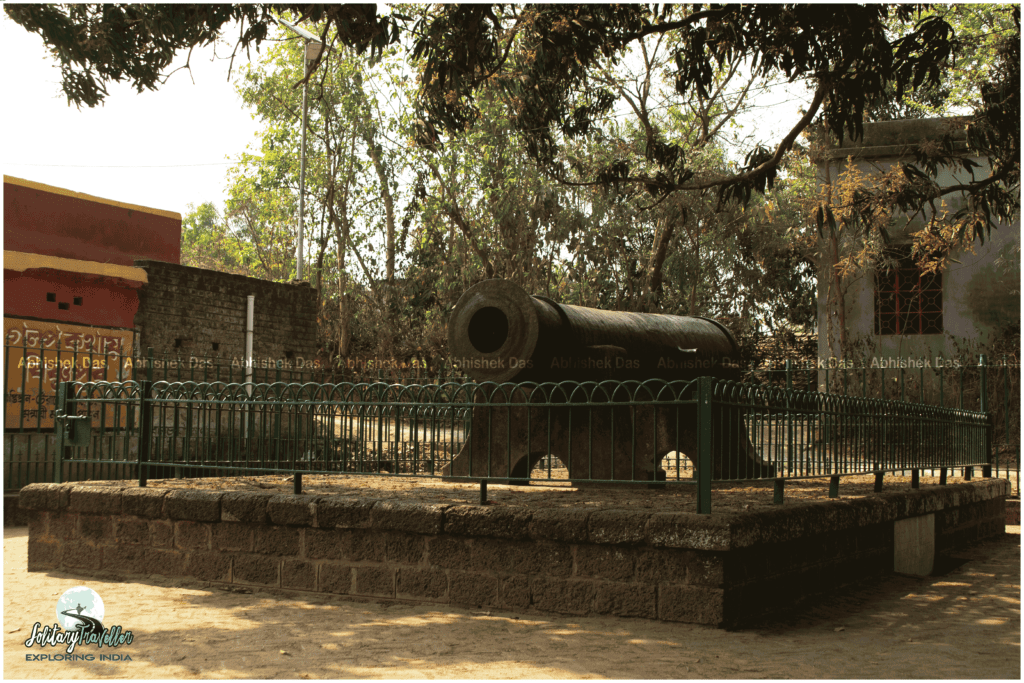
Dalmadal Cannon was one of the famous cannons of West Bengal mounted near the Chinnamasta temple. The cannon exhibits the bravery of the Malla rulers in defending Bishnupur from the invasion of the Marathas. The name ‘Dal Madal‘ means the destruction of the enemy. The huge size of the cannon cast with 63 wrought iron rings that didn’t rust with time also makes it the biggest one. It is around 3.8m in length and has a barrel of 28.6cm of the largest bore cannon that demonstrates the skills of Jagannath Karmakar. The protection of ancient wonder is necessary to understand the detailed history of the make and its prowess.
Rasmancha
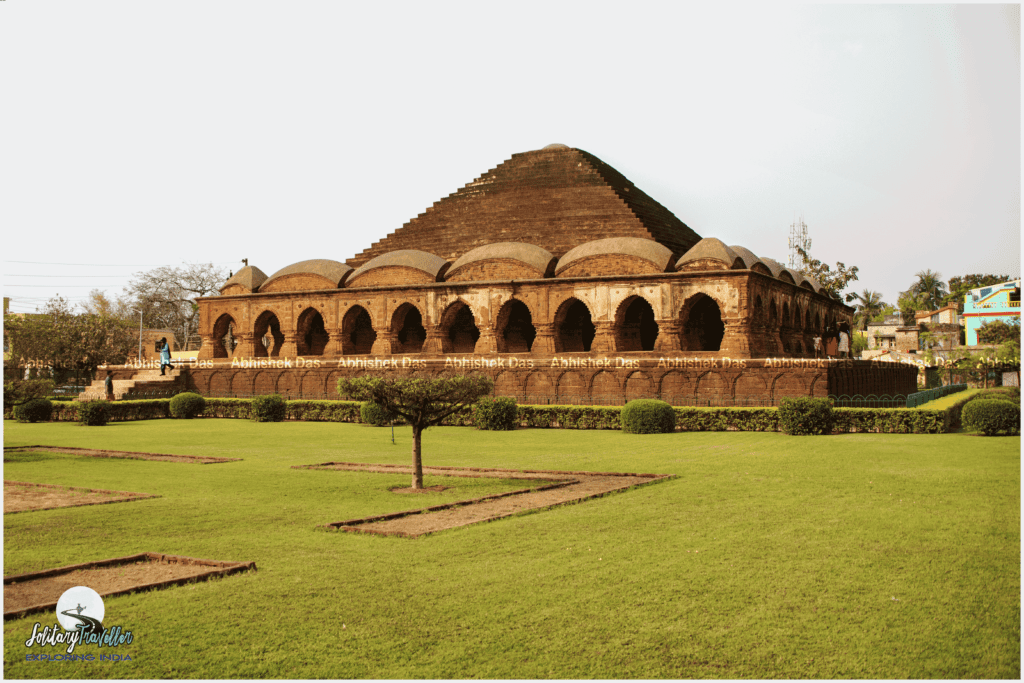
The unique design of Rasmancha makes it individual architecture to be found entirely in India. The pride of Bishnupur was established in 1600 by King Hambir Malla Dev to display all the local idols of nearby temples to worship in public during the festival of Ras Mela. The temple is built on a laterite plinth surrounded by hut-shaped turrets and has an unusual roof elongated as a pyramidal tower.
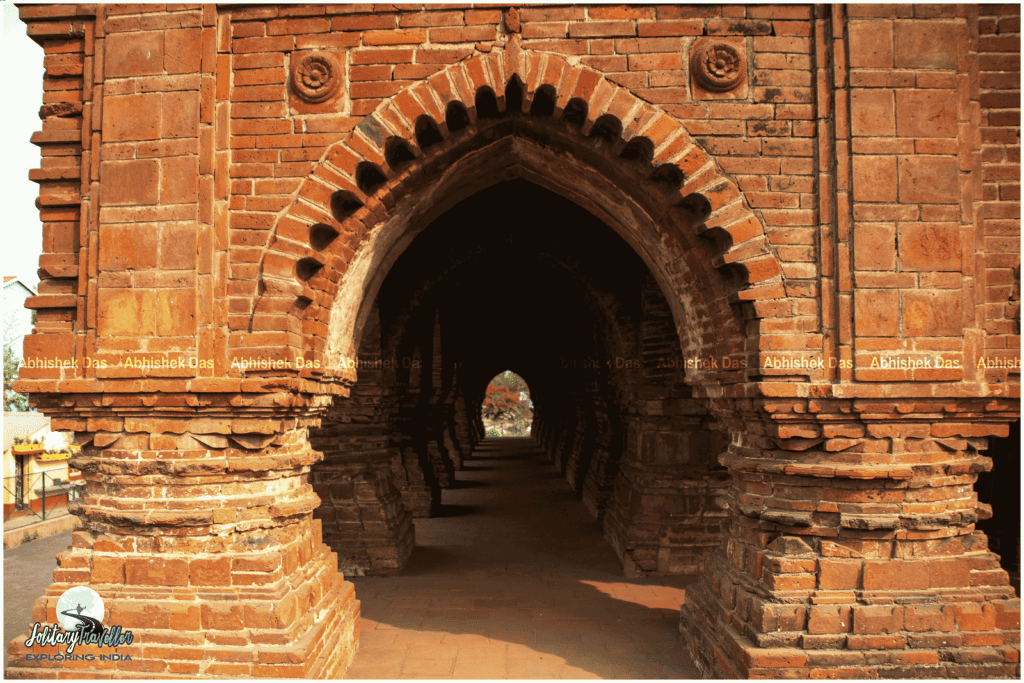
The most interesting feature of the structure is the passageways that form arches surrounding the main chamber of the sanctum. The present-day Rasmancha has been converted into a monument and protected by ASI.
Visitors can buy a single-entry Bishnupur Temple ticket for Rasmancha and all other ASI-protected sites.
Jor-Bangla Temple
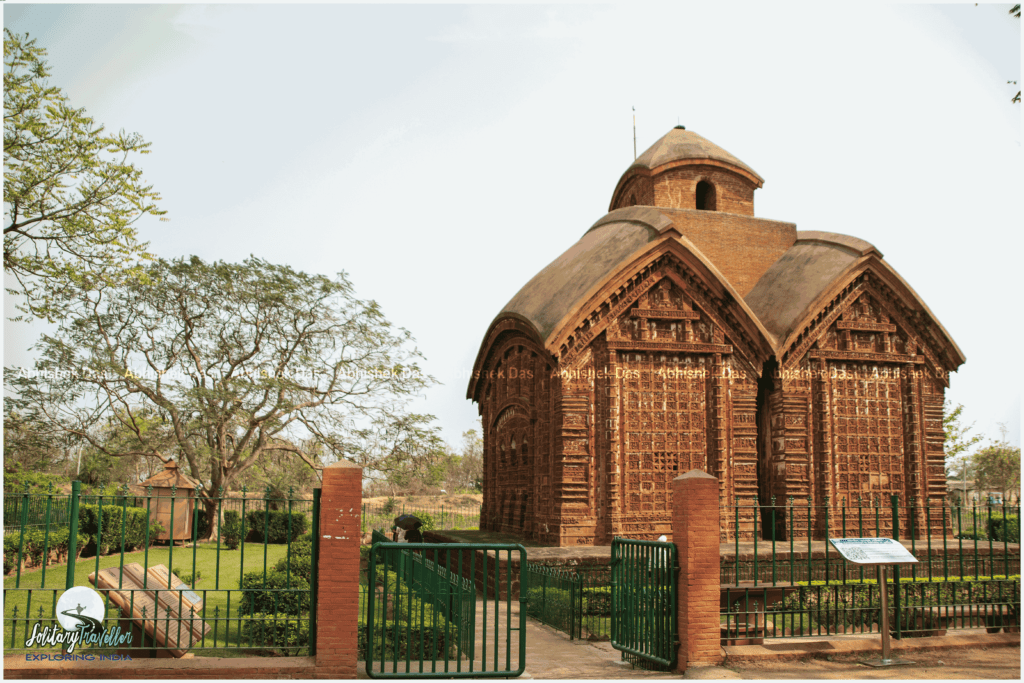
The temple is famed for its ornate carvings of terracotta on the wall which depict the stories from Ramayana, Mahabharata and other Hindu scriptures. The detail of the scriptures describing the scenes is so rich that royal hunting sights, musicians, Kamasutra and dancers narrate it visually.
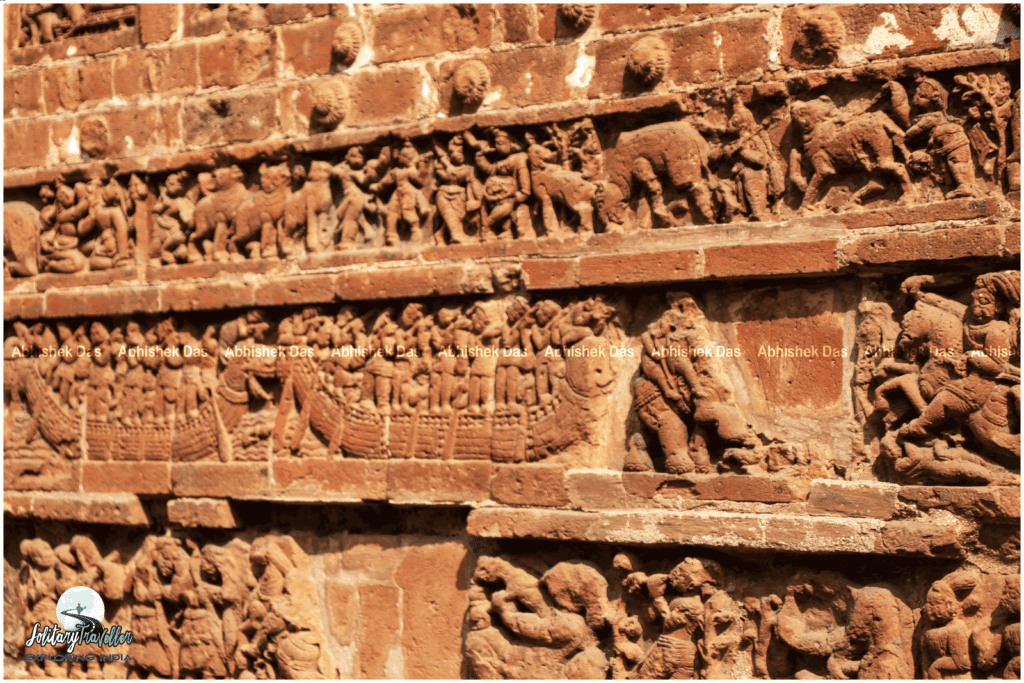
Jor-Bangla temple, also called ‘Kestha Rai‘, has a typical roof that resembles the traditional ‘Chala‘ style of Bengal architecture, as if two village huts are put together side by side. The classic curved roofs of this pair of huts are called ‘Char-Chala Sikhara’. There is an idol of Sambhuja of Sri Chaitanya in one of its two huts, and the other serves as a porch.
You may also like: Recline of Abandoned Temples [Day: 02]
Radha Shyam Mandir
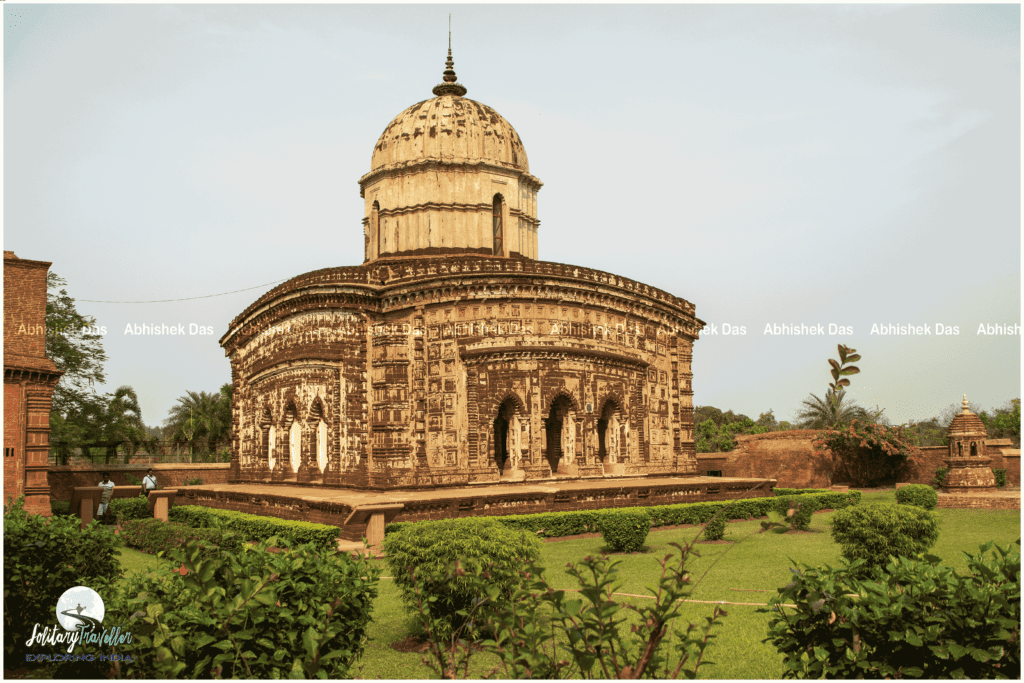
One of the masterpieces works of the terracotta temple of Bishnupur, dated back to 1758 is a popular place to visit. It was built during the reign of Malla King Chaitanya Singha and dedicated to Lord Radha-Krishna. The sanctum enshrines the image of Lord Krishna and Radha along with the likeness of Nityananda and Chaitanya in the sanctity.
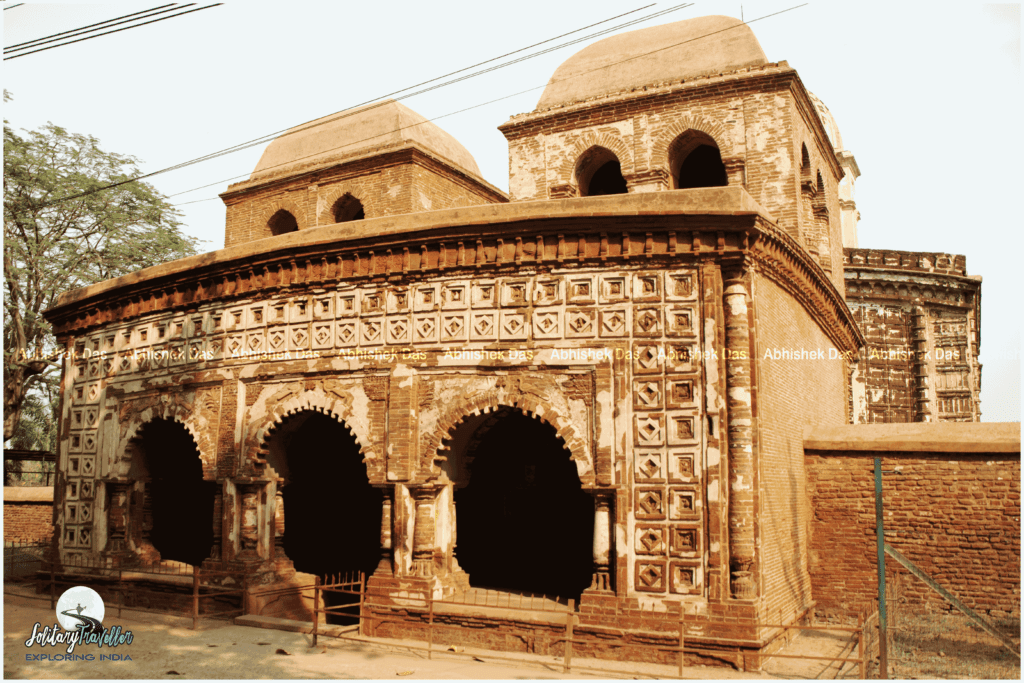
The superb terracotta carvings of floral patterns on the wall with a curved roof have a single tower that crowns the architecture. The aesthetic example of Ek-Ratna temple within an enclosure has a unique triple-arched gateway.
Lalji Temple
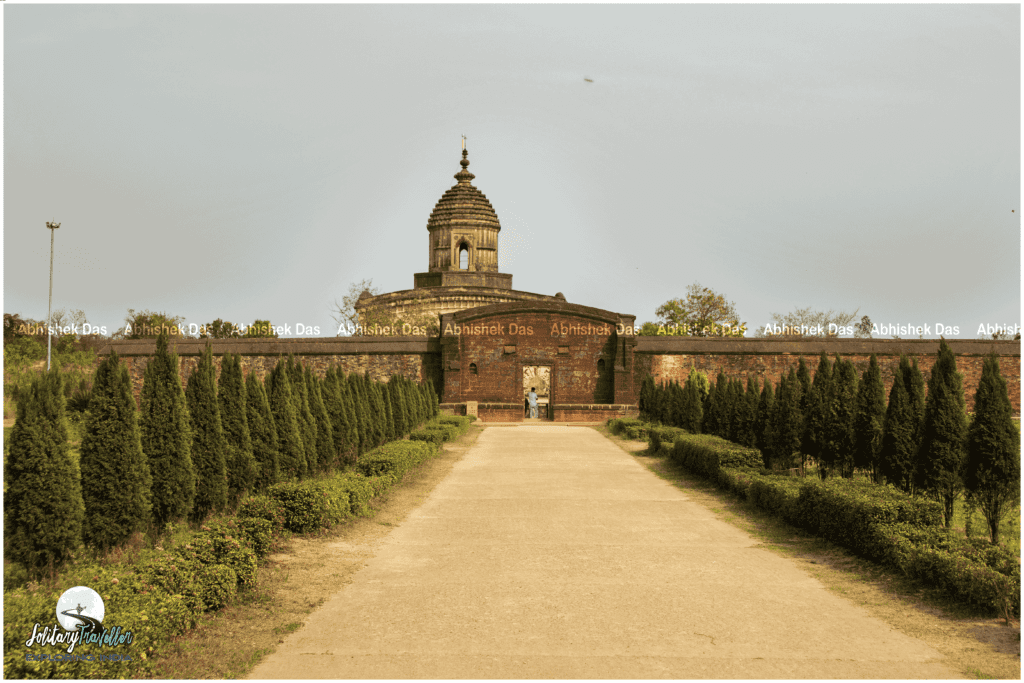
Lalji temple is a prominent terracotta temple of Bishnupur in the Ek-Ratna style. It was constructed around 1658 CE under the reign of Malla King Bir Singha II. The temple is dedicated to Radha-Krishna consisting of ornamental stucco decorations bearing similar concepts of the earlier architecture. A square-raised plinth with descriptive decorated arches has a Char-Chala roof, and a shikhara on top of it is a typical feature.
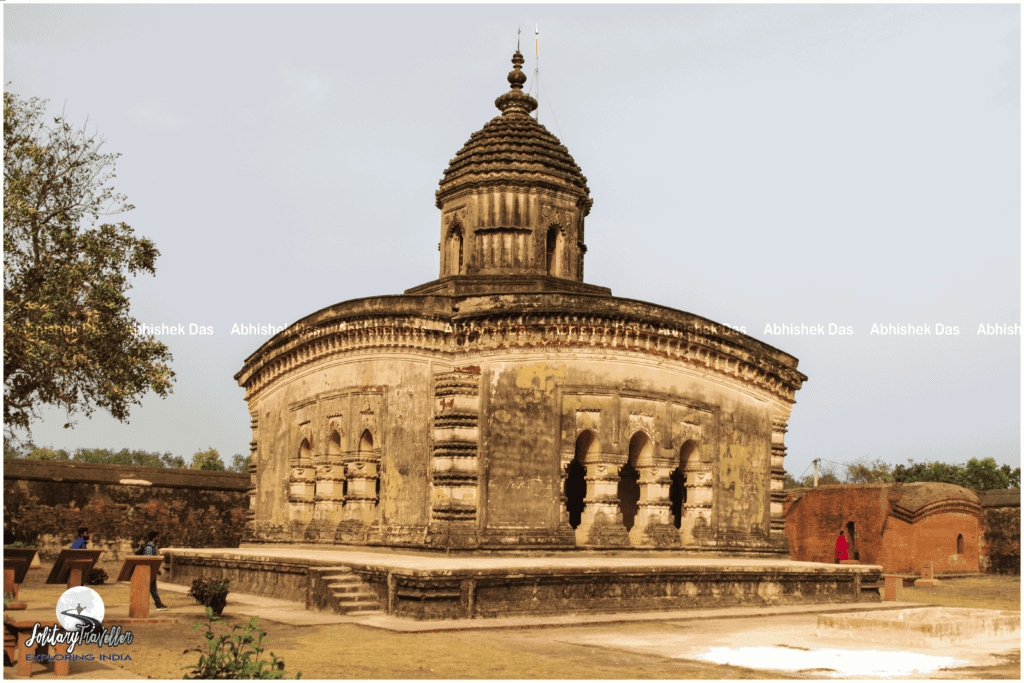
However, the enclosure has a dance hall right in front and to the west is a minaret dedicated to Lord Raghunath. The outer premises has a Pancharatna temple of Kameswar Siva and two carts for Lord Raghunath and the other for Lord Lalji in the front of the gateway.
You may also like: Exploring The Temple City- Madurai
Gate of Old Fort
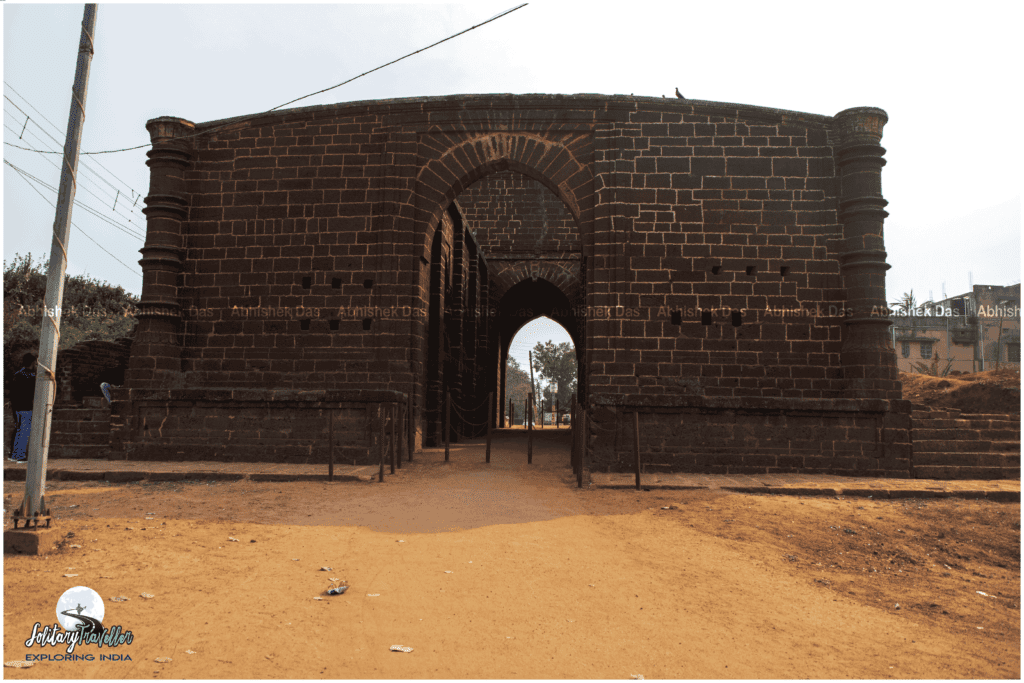
Once, the large gateway was the main entrance of the Royal Kingdom of Bishnupur to the ancient fort. There are no remains of the fort in the present, but the two proud gateways denote their presence. It was also popularly known as Pathar Darwaja constructed to protect the royals from enemies. The huge terrace with double-storied galleries in the central passage had secret chambers to accommodate the army.
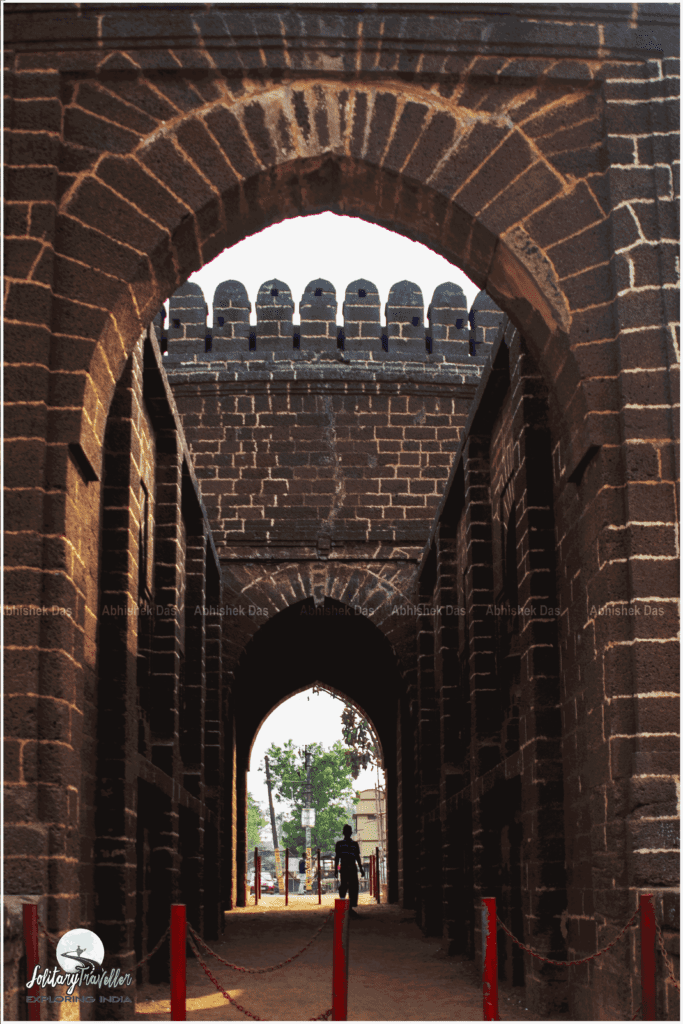
The entire structure is built in laterite blocks to provide more strength and thermal insulation during the hot summer. The arrow slits on the wall allowed the archers and gunmen to defend themselves from the direct line of fire of the enemy. The Boro Pathar Darwaja is a perfect example of the Malla King’s war strategy.
Jor Mandir (Twin Temples)
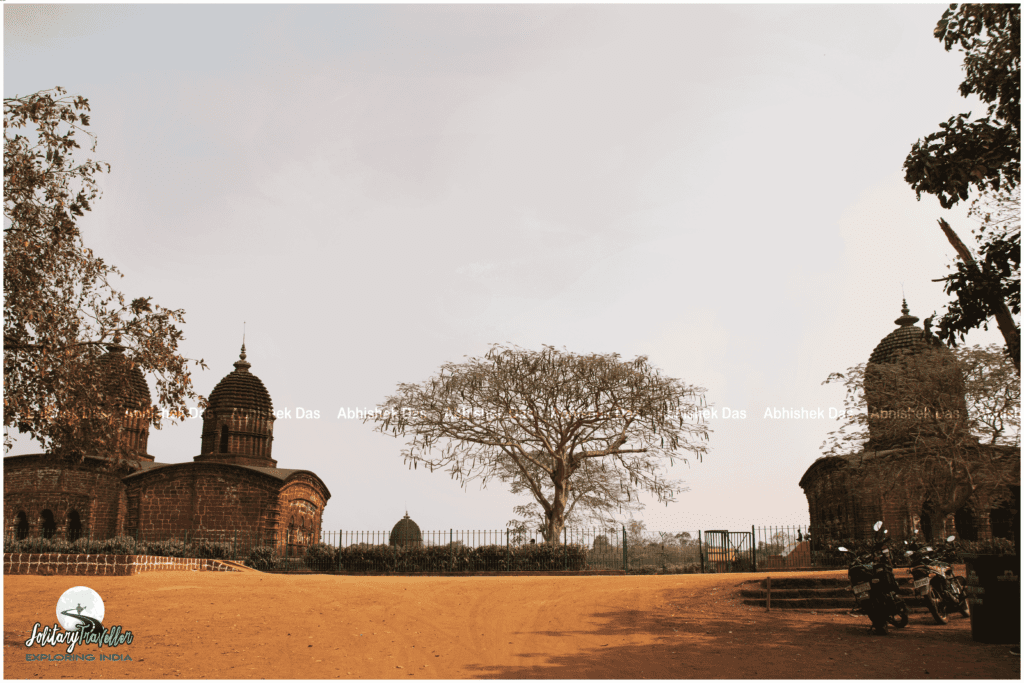
The eye-catching Jor Mandir of Bishnupur has three temples in its complex. The two temples are considerably big and the same in size as, compared to the third one. The three laterite temples are a popular example of the Ek-Ratna architecture style of a slanted roof surmounted by one shikhara. The most interesting fact to highlight is that all three temples were built during the same period of Malla King Gopal Singha in 1726.
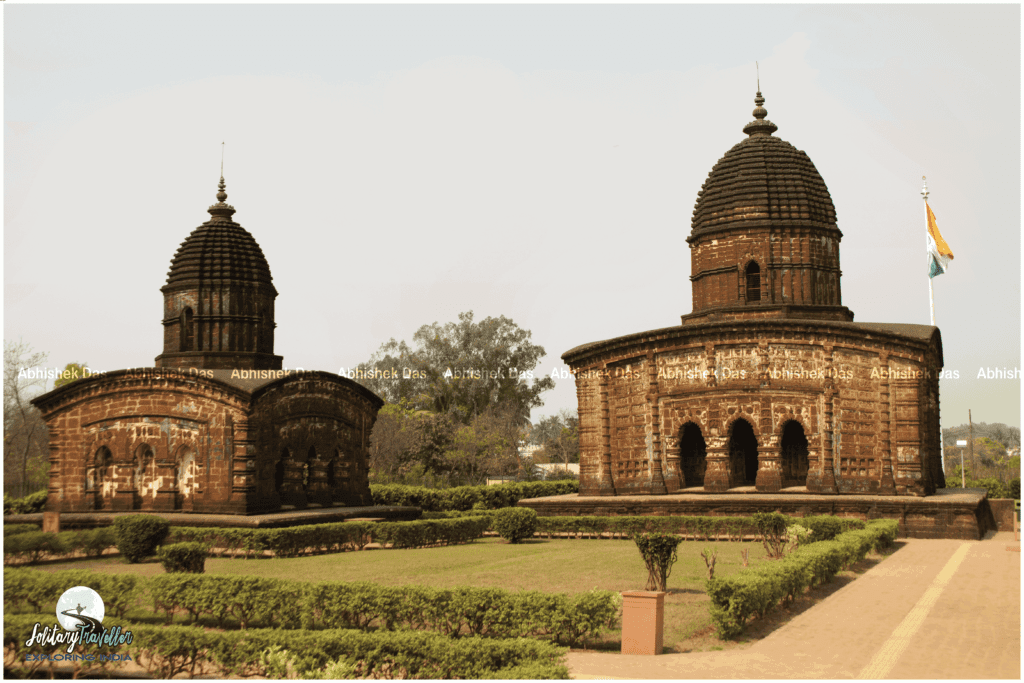
As time has passed, the beautiful stucco artwork on the temple has washed away. Though the middle temple still adorns the scenes of Krishna Lila and Ramayan as the artwork, meanwhile, the rest two have a plain exterior.
Nandlal Temple
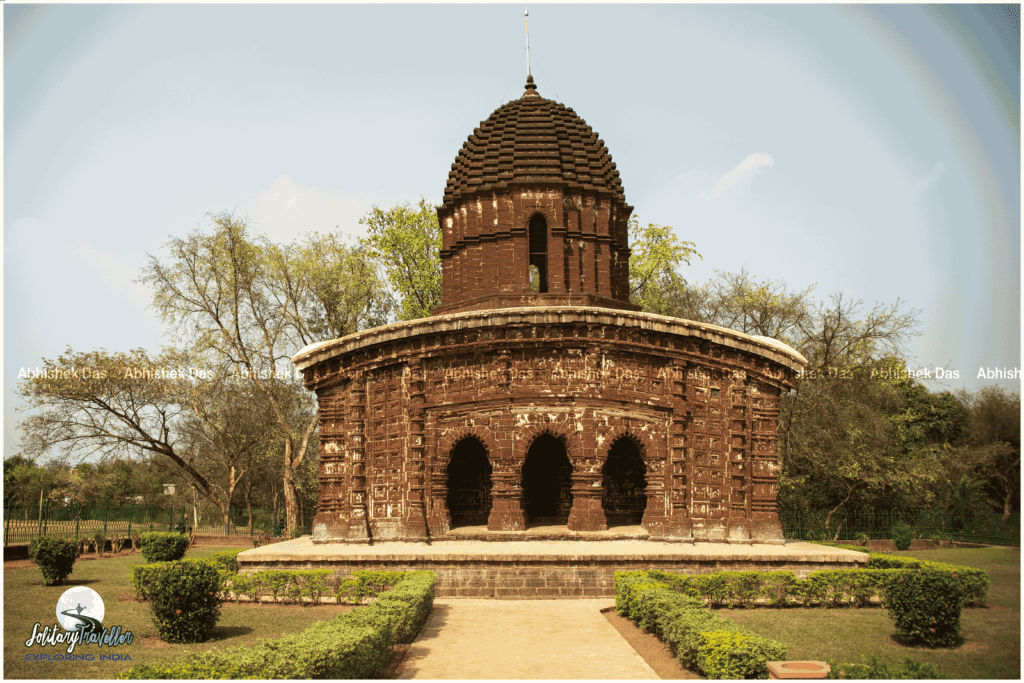
Nandlal Temple is one of the seven Ek Ratna-style temples located in Bishnupur. It is another terracotta temple made of rust-coloured laterite with a vast lawn on the way. In earlier times, the temple had stone carvings of different patterns and figures covered with stucco work on the wall.
At present, the structures moulded on the walls are mostly displaced and sold with the remaining washed out to a lower extent from the surface. It is not yet clearly known who built the temple, however, the archaeologists believe that the architectural style should belong to the 17th century. It also finds the most similarities in structurally with Radha Shyam Mandir.

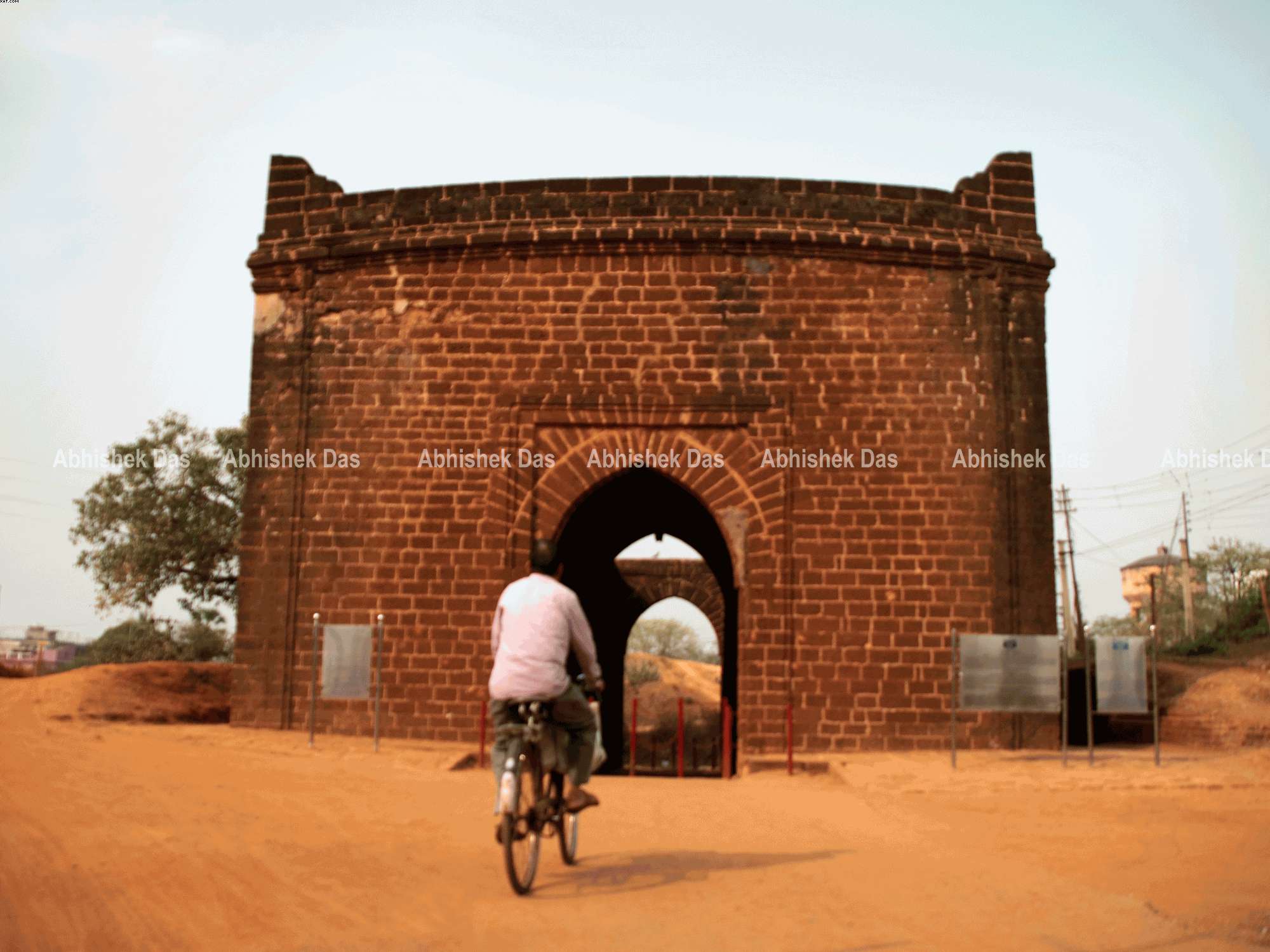
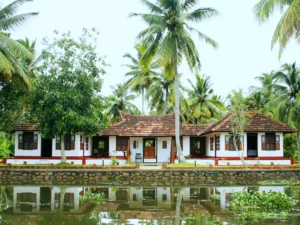
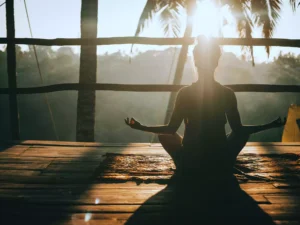
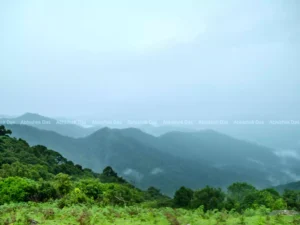


One comment